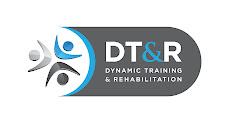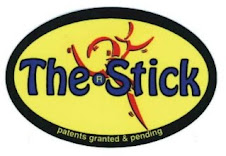Here in Southern Ontario we are a hockey nation. It has been a great start to the year, the Maple Leafs are 4-0 (best start since I can remeber......), a few of our players are already in talks with Junior Clubs, and the Canadian Human Performance Centre and DT&R are expanding rapidly!
With the cold weather, hockey arena's back open, and hockey fever in the air, there seems to be a new wave of injuries that we are seeing in our clinic: Adductor Strains.
If an athlete comes into our facility with a "Groin Pull", it brings 2 conclusions to mind:
1) There is an imbalance present that is creating stress through the adductor muscle group
2) There is an improper conditioning and exercise progran implementation. (1 usually is lead into #2)
Most patients that come through our office, currently or have recieved regular manual therapy for the problem. This usually consist of a modality like ultrasound or laser on the affected area, massage thechniques or active release, and maybe some taping.
These athletes always seem to come back with the same complaint...........GROIN PAIN!
Why don't we fix the root of the problem so this never comes back and the athlete gets back to play or life at optimal performance??
A few Things to look for with "Adductor Pain":
1) The strength and muscle firing of the QL on the same side of the dysfunction. This could also lead to an imbalance in the pelvis which will cause dysfunction. There is a strong Osteopathic relationship between the QL and Adductor Group. Working and relieving one group, can counter balance the other, and vice-versa..
2) Pelvis Alignment. In my personal experience, the Innomonant or hip bone on the side of the dysfunction has an Anterior Rotation and Superior Shear. This will show as unlevel and ASIS (anterior superior illiac spine)
3) The Glute Max and External Rotaters are tight and weak. Yes, this is possible to have both present at once. This will cause a External Rotation of the femur resulting in excess force and strain through Adductor Magnus.
4) The Pubic Symphisis Joint. NO ONE EVER ASSES THIS JOINT. Either because the practitioner is nervous or unaware, it must be assesed and treat for every condition in the body!
5) Ankle Mobility. If the is a lack of Dorsi Flexion at the Sub Talar Joint, there will be an excess of Knee Flexion and Internal Rotation, thus causing a shear at the knee, and more stress through the Adductor Group.
Adductor Prevention is important to keep athletes on the field or ice. We should always be assessing biomechanics of the lower extremity, and muscle strength test to keep our patients and clients healthy.
Here is a video protocol. It is a basic stream of exercises for the readers at home that would like to prevent this injury:
2. We have just launched a great video with Mindi Obrien from Team Obrien Fitness and Dynamic Rehab. Rachel LeBlanc, Canada's newest IFBB Pro flew in from New Bruinswick (Far East Coast) over the summer to recieve treatments and workouts. Check out the video!
3. For all the Manual Therapist that read this blog, we are working on a new project that is going to take your business and practice to the next level.........that is all we are going to unleash now........
Subscribe to:
Post Comments (Atom)
Disclaimer:
Please be advised that there are risk invloved in participating in any exercise program. By Participating in the Demand of Corrective Exercise and Fitness classes, members or participants are assuming all risks of injury that may result. Bogar Performance and Dynamic Training & Rehabilitation, our Therapist, Trainers, and our third parties shall not be liable for any claims for injuries or damages whatsoever, resulting or connected with the use of this blog and website. We further disclaim any liability caused by intentional or unintentional negligance.
The sole purpose of this blog is to be an education resource for trainers, therapist, and workout enthusiast. Pleas seek a Health Care Provider prior to starting any exercise program and therapy.
The sole purpose of this blog is to be an education resource for trainers, therapist, and workout enthusiast. Pleas seek a Health Care Provider prior to starting any exercise program and therapy.












No comments:
Post a Comment